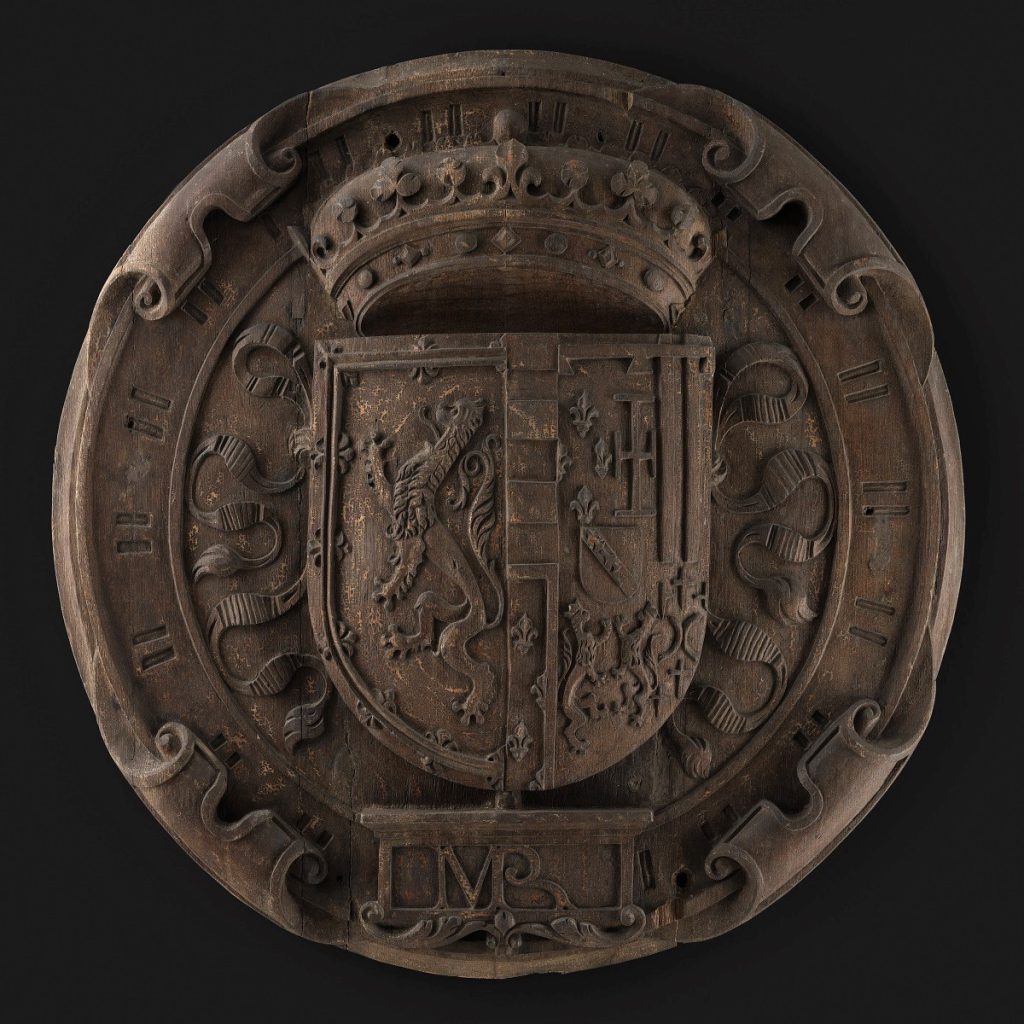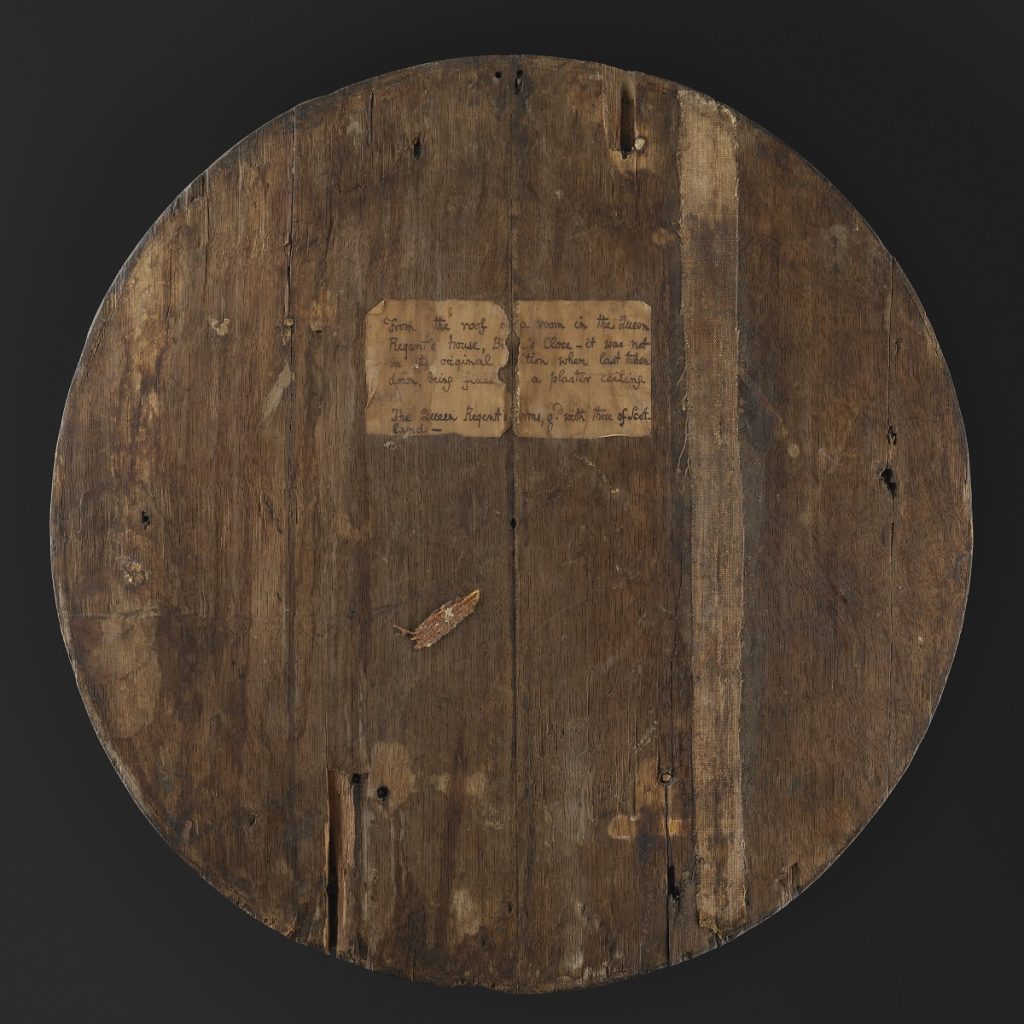An ‘attic sale’ of objects from Dunrobin Castle gave National Museums Scotland the opportunity to acquire four armorial roundels. One of these roundels depicts the combined coat of arms of Marie de Guise and James V, parents of Mary, Queen of Scots. Dr Anna Groundwater discusses this roundel’s symbolism, its use in Marie’s house in Blythe’s Close, Edinburgh, and the national significance of this acquisition.
On 8th December 1542, Mary Queen of Scots was born at Linlithgow Palace. Her father, James V, died just six days later, leaving her mother, Marie de Guise to safeguard her future. Her parents had married in June 1538 at St Andrews Cathedral, in a liaison intended to secure the ‘auld alliance’ of Scotland with France against England and Henry VIII.
The imagery associated with the marital union can be seen in this recently acquired armorial roundel. It carries the impaled arms of James V (the rampant Scottish lion), and of Marie de Guise surmounted by a crown. As such, this set of marital arms represents Mary’s rich ancestry in the Scottish royal Stewart and powerful French de Guise dynasties.
This roundel is one of four similarly produced carved oak roundels that once adorned the walls or ceilings of Marie’s residence in Blythe’s Close, just off Lawnmarket and the High Street in Edinburgh. While Marie had royal apartments at the castle and at Holyrood Palace, it is thought that she used this house in the 1540s and 1550s following the death of James in December 1542. It offered a less public, more informal space in which to entertain and interact with diplomats, the nobility, and members of Edinburgh’s merchant and civic elites. As the house of a crowned queen and, from 1554, the Regent of Scotland, it was of a high standard and contained an oratory for private worship.

Armorial roundels like these were frequently included in elaborate decorative schemes in royal and noble houses. They were used to promote the elite status of those who lived in the apartments, and to demonstrate their relationships with powerful people. The coats of arms on the other three roundels further suggest the Blythe’s Close house’s royal connections. In particular, one roundel carries the crowned fleur de lis of Henri II, king of France from 1547 to 1559, who had helped to orchestrate Marie’s marriage with James.
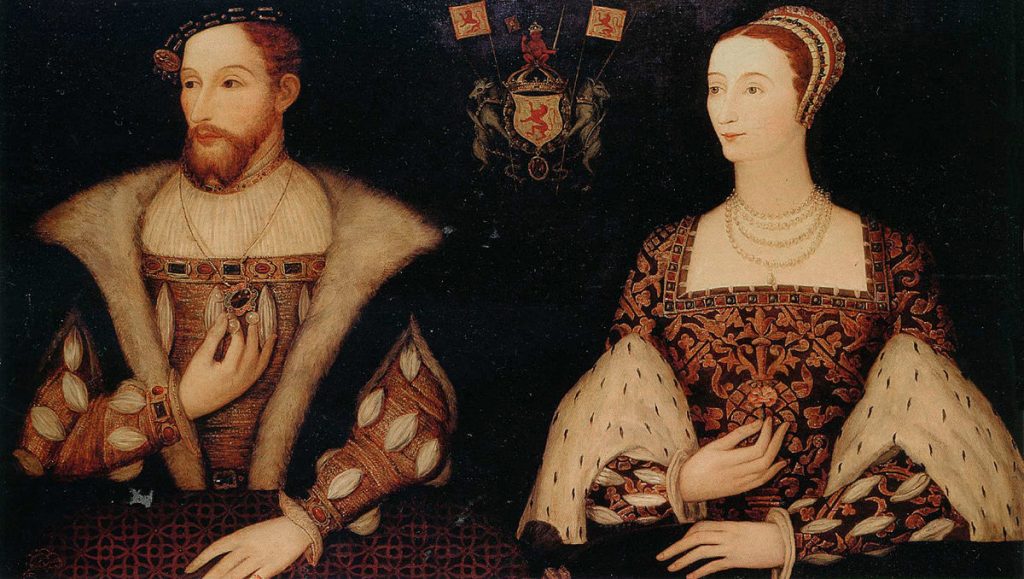
A third roundel has more Scottish connections, bearing the arms of the Hamilton family (earls of Arran and the forebears of the dukes of Hamilton) and carries birlinns, a type of Hebridean galley, in the second and third quarters. It is likely that this set represented James, second earl of Arran and duke de Châtellerault (1519-1575), who acted as Regent of Scotland from 1543 to 1554.
Arran’s position as Regent reflected his own close familial relationship with the royal Stewart family. He was the descendant of a daughter of James II, and was acknowledged as next in line to the Scottish throne after Mary, Queen of Scots. He was also married to a granddaughter of James IV, Margaret Douglas. This put Arran in a very strong position, and he vied with Marie de Guise for the regency. He only surrendering it to her in 1554 after some bargaining.

The final roundel bears the arms of the City of Edinburgh with its three-towered castle. It is surmounted by a laurel wreath, supported on the left by the figure of a maiden, and on the right by a hind (a female deer). These arms were not officially registered at the Lyon Court until 1774, however they were in circulation before this. The figure of the maiden is supposed to refer to castrum puellarum, Latin for ‘Castle of the Maidens’, an ancient name for Edinburgh. The roundel is somewhat different in style to the other three and was possibly never intended as part of the set, however its presence in the house signifies the mixture of royal, noble and civic elite associations of the house and the people who will have lived there.
Unfortunately, the ‘Queen Regent’s House’ in Blythe’s Close no longer exists. By the early 1800s the house had deteriorated, by then subdivided into small apartments and inhabited by multiple tenants in varying degrees of poverty. In 1846 it was demolished, and the New College was built in its place. We can still get a sense of what it might have looked like from historical maps of Edinburgh and from other houses that survive, such as the ‘John Knox’ house on the High Street.
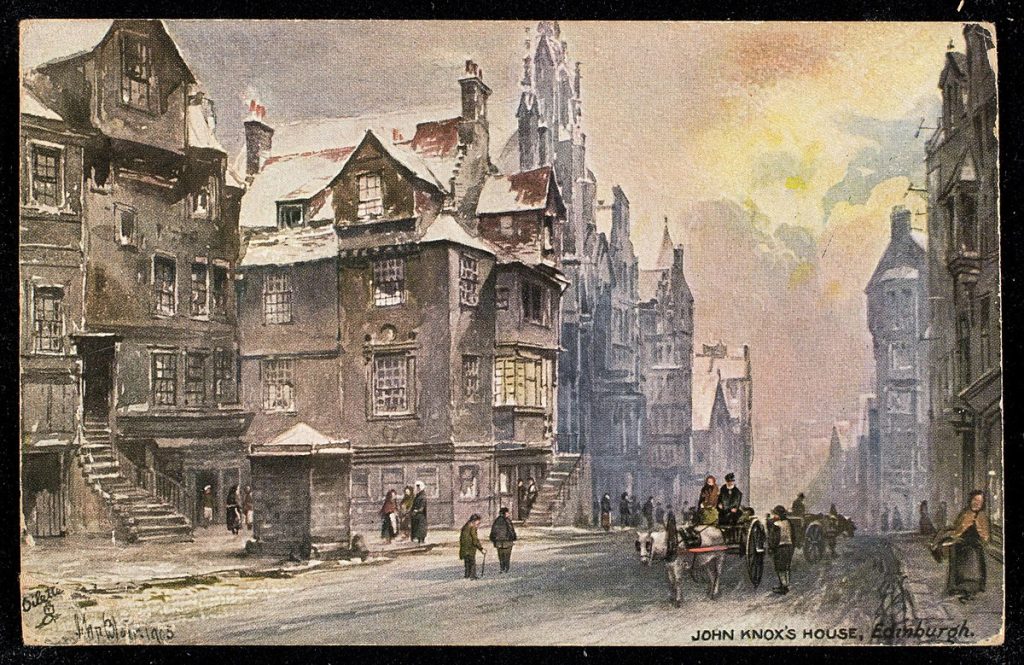
Luckily, various Scottish antiquaries were alert to the tradition of the association with Marie de Guise. They recorded descriptions of its interiors and exterior, and illustrations from that time indicate its faded grandeur. One of these collectors, Charles Kirkpatrick Sharpe, concerned about the house’s dilapidation in the 1820s, acquired various parts of the building and its decoration from its tenants. In 1824 he noted in a letter to Lord Gower, the future duke of Sutherland, that he had ‘pretty well stripped [the Queen Regent’s house] of its woodwork’, and these purchases included the four roundels.
On Sharpe’s death, the duke of Sutherland bought the roundels from the antiquary’s estate to use in his new decorative scheme in his library at Dunrobin Castle. It is from a sale of some of that castle’s contents that the roundels have recently entered National Museums Scotland’s collections.

Despite the disappearance of the house we do have some idea of how the roundels might have been used to decorate it, partly from the antiquarian records but also from the nineteenth century paper labels affixed to the reverse of the carvings. The James V / Marie de Guise roundel is thus inscribed, ‘From the roof of a room in the Queen Regent’s House, Blythe’s Close, it was not in its original position when last taken down, being fixed to a plaster ceiling, the Queen Regents arms, [joined] with those of Scotlands’. Others are recorded as being in the high-ceilinged lobbies off the turreted stairs. At various times these will have been painted over, but currently they are in their unvarnished condition.
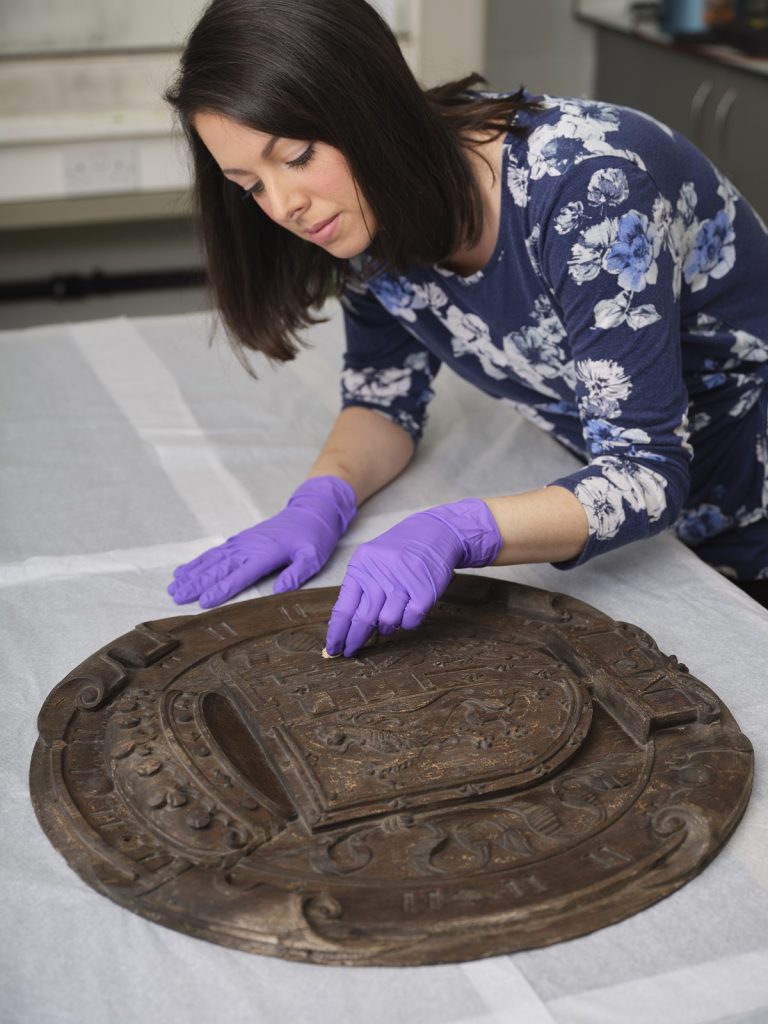
Most significantly, the roundels have joined other decorative objects from the Blythe’s Close house in National Museums Scotland’s collections. In due course, the four carved coats of arms will be physically re-united with the two doors and sixteen oak medallion panels already on the walls of the Burghs displays in the Kingdom of the Scots galleries in Chambers Street. One of the doors is particularly noteworthy with its carvings of a winged eagle, a deer’s head, and the heads of what have been suggested are James V and Marie de Guise.
The acquisition of the James V / Marie de Guise roundel means that their physical and armorial representations will once more be united under one roof.
The Blythe’s Close roundels were acquired with the generous support of the Ewan family.

